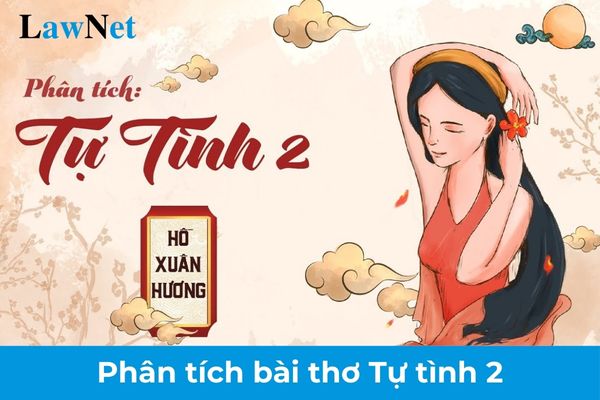What are the guidelines for analysis of the poem "Tự tình 2"? What is the maximum number of students in a class in vocational education and training institutions at the upper secondary level in Vietnam?
What are the guidelines for What are the guidelines for analysis of the poem "Tự tình 2"?
The poem "Tự tình 2" by Ho Xuan Huong is one of the representative works that deeply expresses the mood and fate of women in feudal society. Analyzing the poem "Tự tình 2" will help us understand more about Ho Xuan Huong's artistic talent as well as its profound humanistic value.
Students may refer to the following sample analysis of the poem "Tự tình 2":
|
The female poet Ho Xuan Huong is one of the prominent names in Vietnamese poetry. Among the many works she left behind, the main creative style is the portrayal of the circumstances of love. Most of Ho Xuan Huong’s poems speak about the virtues, the sacrifices, and the fragile fate of women in harsh feudal society. Among them, Tu Tinh is also one of the typical works for this dominant style. “In the late night, the drum of the watch resounds far and near” The author uses the word "faintly" to describe a sound that is both clear and vague, directionless but increasingly perceptible. The temporal setting of the poem is "late night" – a time when people easily fall into indescribable emotional states. Amidst that "late night," there is a woman still awake, pondering her life amidst the faint sound of the drum in the distance. “A glass of wine perfumes the air, then sobers again” Borrowing wine to drown her sorrows under the moon is a familiar image in poetry, a beautifully poetic image. Unfortunately, those who borrow wine to drown their sorrows cannot use the strong aroma to dispel their feelings. The more one wants to be drunk to forget everything, the more the fragrance of the strong wine seems to make the mind clearer. “Mosses spread across the earth sideways” The image of moss in the poem displays the deep implications of the female poet. What she wants to express here is a metaphor comparing women to moss, small yet with strong vitality, able to thrive in any harsh condition. The phrase "spread across the earth" also makes readers envision the strong resistance of the subject against greater forces. “Weary of spring passing, spring returning again” The nature's spring goes away and comes back, but human "spring" is not like that. Youth comes only once, gone and never returns. Therefore, the woman feels even sadder, more pitiful when her youth passes in endless waiting, in the circumstance of sharing her husband’s love. The word "weary" is used to express boredom, but also as the author’s cry for women of such unfortunate fate, forced to be concubines under old policies, without voice, without respect. |
Note: The content is for reference purposes only.

What are the guidelines for analysis of the poem "Tự tình 2"? What is the maximum number of students in a class in vocational education and training institutions at the upper secondary level in Vietnam? (Image from the Internet)
What is the maximum number of students in a class in vocational education and training institutions at the upper secondary level in Vietnam?
Under Article 9 of Circular 15/2022/TT-BGDDT which stipulates the organization of teaching in vocational education institutions at the high school level as follows:
Organization of teaching
1. Each subject will have a separate class, each class must not exceed 45 students.
2. Each subject will be for a duration of 03 (three) semesters. The head of the vocational education and training instution will decide the division of semesters and develop a teaching plan ensuring full knowledge, requirements to be met and teaching duration of the subject.
3. A number of the main teaching forms includes learning theory, doing exercises, practicing, experimenting, doing learning projects, experiencing, participating in collective activities, clubs, community service activities.
4. Implement active teaching and learning methods in order to promote the initiative and positivity of learners; focus on training learners in self-study methods according to teaching and learning requirements for developing quality and capacity.
Thus, the maximum number of students in a class in vocational education and training institutions at the upper secondary level in Vietnam is 45.
How many subjects are taught in vocational education and training institutions at the upper secondary level in Vietnam?
Under Clause 1, Article 5 of Circular 15/2022/TT-BGDDT, there are 07 subjects taught in vocational education and training institutions at the upper secondary level in Vietnam as follows:
- Compulsory subjects: Mathematics, Literature, History.
- Elective subjects: Physics, Chemistry, Biology, Geography.

